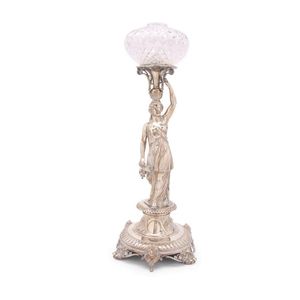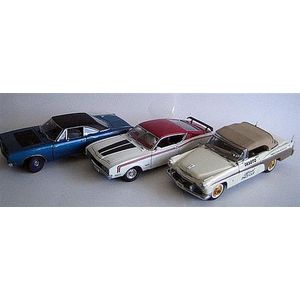1930 Diamond Ring and Bracelet Set
You must be a subscriber, and be logged in to view price and dealer details.
Subscribe Now to view actual auction price for this item
When you subscribe, you have the option of setting the currency in which to display prices to $Au, $US, $NZ or Stg.
- Carat - A carat (abbreviated "ct") is a unit of measurement used to describe the weight of a diamond or other gemstone, and separately is a unit of measurement used to describe the weight of precious metals such as gold,.
For gemstones, one carat is equal to 0.2 grams or 200 milligrams. The weight of a diamond is one of the Four Cs (along with cut, colour, and clarity) that are used to determine a diamond's value.
It is important to note that a diamond's weight does not necessarily correspond to its size. A diamond's cut, which affects how well it reflects light, can make a diamond of a lower weight appear larger than a diamond of a higher weight. Additionally, the carat is not the only factor to determine the value of a diamond, other factors such as clarity, colour and cut are important too.
In the gold industry, the purity of gold is measured in carats (abbreviated "ct"), with 24 karats being pure gold and lower carat numbers indicating a lower purity level. So, for example, 18 carat gold is 18/24 or 75% pure gold, and 12 carat gold is 12/24 or 50% pure gold. - Claw Set Jewellery - The description "claw set" in jewellery refers to a setting where the gemstone is held in place by metal prongs that resemble claws. These prongs are bent over the edges of the gemstone to secure it in the setting. This type of setting is commonly used for diamonds and other precious stones.
- Openwork in Jewellery - Openwork, also known as pierced work, is a decorative technique used in jewellery making that involves removing or cutting out sections of metal from a piece of jewellery to create a pattern or design. This technique can be used in a wide range of jewellery styles, including necklaces, bracelets, earrings, and rings.
Openwork jewellery can be made using a variety of different techniques, including hand carving, sawing, and laser cutting. The design can be simple or complex, and can feature a range of different shapes and motifs, from delicate floral patterns to bold geometric designs.
One of the advantages of openwork jewellery is that it can add visual interest and depth to a piece without adding a lot of weight or bulk. This can be particularly appealing in larger pieces, such as necklaces and bracelets, where heavy materials can be uncomfortable to wear. - Circa - A Latin term meaning 'about', often used in the antique trade to give an approximate date for the piece, usually considered to be five years on either side of the circa year. Thus, circa 1900 means the piece was made about 1900, probably between 1895 and 1905. The expression is sometimes abbreviated to c.1900.
This item has been included into following indexes:
Visually similar items

A 'famille-verte' jar and cover Qing dynasty, late 19th century of ovoid form, brightly enamelled with panels of precious objects, birds on blossoming trees and flowering plants, all reserved on the iron-red floral scroll ground bearing green flowerheads (

Large, old and high quality Khyber knife with scabbard, 72 cm overall with 57.5 cm blade of traditional form, steel mounted horn grip scales, finely pieced loop on pommel. The wooden scabbard covered in embossed black leather and with a cut and chiselled s

A sterling silver centrepiece. The crystal shade held aloft by a classically robed figure of a lady London, 1871. Maker probably J. E. W. & J Barnard. Converted to lamp. Height 60 cm. Total weight (including crystal shade: 3.094g).

A Danbury Mint '1968 Plymouth Roadrunner', a GMP '1969 mercury Cyclone' and a '1956 de Soto Pacesetter'. (3)
